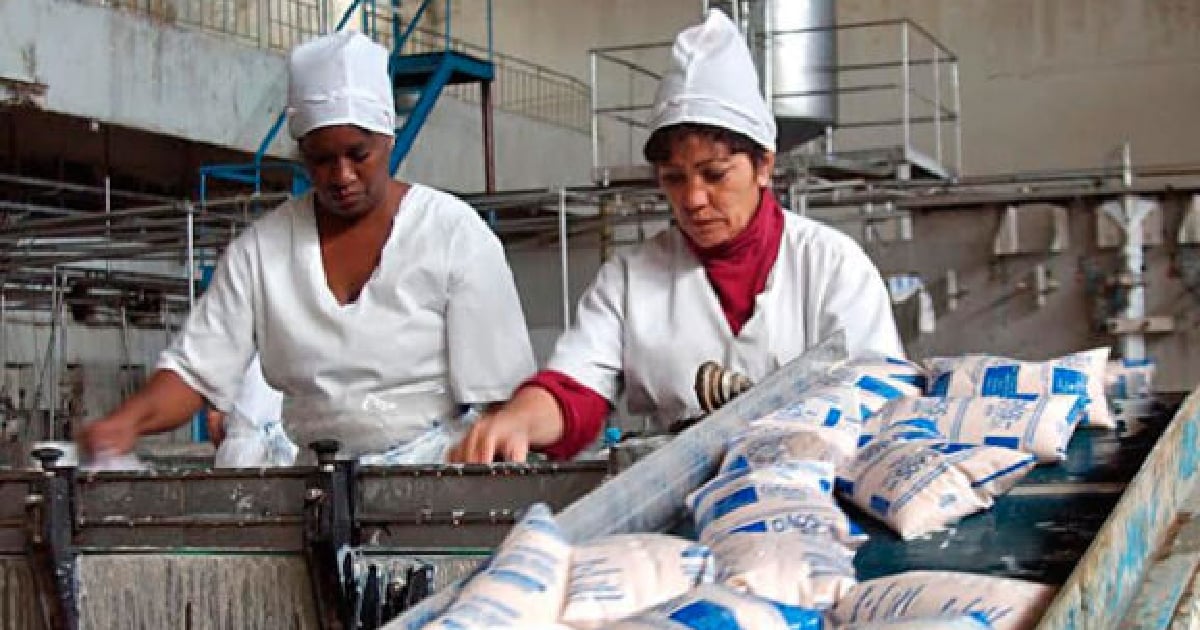Cuba's industrial sector hit a historic low in 2024, marking the weakest production output in four decades. This was highlighted by economist Pedro Monreal in a recent analysis shared on social media. Monreal pointed out that in seven key areas impacting citizens' well-being, last year's production figures fell below those from 40 years ago and even dipped beneath the levels seen during the Special Period.
Monreal's analysis focused on the production of essential goods such as wheat flour, animal feed, steel bars, bread, fertilizers, rice, and gray cement, drawing from data provided by the National Office of Statistics and Information (ONEI). The findings revealed a significant decline across all sectors, with steel bars and fertilizers showing a complete halt in production.
This situation underscores the worsening "deindustrialization of Cuba in the post-reordering era," wrote Monreal. He attributed this ongoing crisis to the "fracture of the Soviet-era integration model," "de-capitalization of the sector," and the "technological obsolescence" of much of the industrial infrastructure. Furthermore, Monreal criticized the lack of a "credible program" for reindustrialization, highlighting a severe gap in economic policy.
"The industry doesn't even have anything resembling the 'fig leaf' of the 63 (ineffective) agricultural measures," he argued. Meanwhile, the regime continues to bank on tourism recovery, persistently labeling it as the "driving force" of the economy, and focuses its efforts on constructing and renovating hotels.
The Cuban Minister of Tourism, Juan Carlos García Granda, expressed optimism about the sector's recovery during the winter season of 2025-2026, despite a 29.7% drop in international visitor arrivals recorded in the first quarter of the year. In statements to the press following the conclusion of the International Tourism Fair (FITCuba) 2025 at the Cabaret Tropicana, he noted that the event "exceeded expectations" not only in terms of organization but also in the participation of over 1,500 foreign professionals and 2,573 nationals, including representatives from both the state and private sectors.
The minister highlighted positive feedback from tour operators regarding the quality of service during the previous winter season and asserted that measures such as supplier financing and increased business autonomy would enhance the sector's performance for winter 2025-2026. "These actions are part of a path that is already yielding results," he assured, while defending new mechanisms like hotel leasing and regulatory restructuring to encourage foreign investment and competitiveness.
However, the perception of FITCuba as a successful showcase contrasts sharply with the experiences of many visitors who encounter high prices, service shortages, and a limited range of offerings.
Insights into Cuba's Industrial Decline and Tourism Strategy
What are the main factors contributing to Cuba's industrial decline?
The industrial decline in Cuba is attributed to factors such as the fracture of the Soviet-era integration model, decapitalization of the sector, and technological obsolescence of the industrial infrastructure.
How is Cuba's government responding to the industrial crisis?
The Cuban government has not established a credible reindustrialization program. Instead, it continues to focus on tourism as the main economic driver, investing in hotel construction and renovation.
What measures are being taken to boost Cuba's tourism sector?
Measures include supplier financing, increased business autonomy, hotel leasing, and regulatory restructuring to enhance foreign investment and sector competitiveness.
